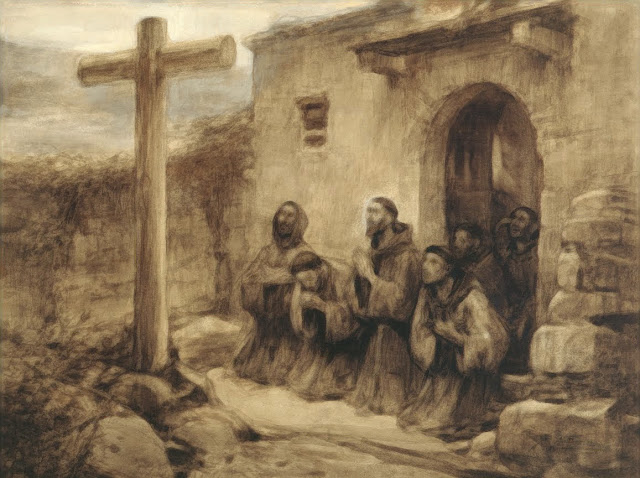Exaltation of the Holy Cross
Español
On September 14, 1224, it is believed that Saint Francis of Assisi received the stigmata of Christ on Mount Della Verna (Italy). According to Saint Bonaventure, the event occurred around the feast of the Exaltation of the Cross (ML 13,3). This mystical experience was such a decisive change in the last two years of his life that it cannot be dispensed with in the present reconstruction. First of all, the five wounds and, especially, the often open and bleeding one on his side, must have caused him continuous and excruciating pain, and led him, due to their plastic reproduction character, to a constant and intense communion with Christ crucified.
Few Saints have achieved popularity for their dedication and poverty like Saint Francis of Assisi. His birth, under the name of Giovanni di Pietro Bernardone, in the small Italian town of Umbria occurs between the years 1181 and 1182.
From being the son of a rich merchant, he went on to live under the strictest poverty and observance of the Gospels after receiving the call of God. His commitment and dedication to his new life was total, to the point of changing his name to what we know him today.
He led an austere and simple religious life, a fact that encouraged his followers to do the same. In 1209 he founded the Franciscan Order thanks to the verbal approval of Pope Innocent III. An approval that did not arrive in writing until 1223, already with Pope Honorius III, who granted the Franciscan Order the Solet Annuere bull.
San Francisco de Asis is the first known case in the history of visible and external stigmatization. Event that is believed to have occurred on September 14, 1224 at Monte della Verna, two years before his death in the Italian city of Assisi.
In 1228 he was canonized by the Catholic Church. Pope Gregory IX, a great defender of the work of Saint Francis of Assisi, was the one who officiated the ceremony in the Church of Saint George, a place that today is known as the Basilica of Saint Francis of Assisi.
His feast is celebrated on October 4, a day after his death that occurred on October 3, 1226 at 44 years of age.
On September 14, 1224, it is believed that Saint Francis of Assisi received the stigmata of Christ on Mount Della Verna (Italy). According to Saint Bonaventure, the event occurred around the feast of the Exaltation of the Cross (ML 13,3). This mystical experience was such a decisive change in the last two years of his life that it cannot be dispensed with in the present reconstruction. First of all, the five wounds and, especially, the often open and bleeding one on his side, must have caused him continuous and excruciating pain, and led him, due to their plastic reproduction character, to a constant and intense communion with Christ crucified.
Few Saints have achieved popularity for their dedication and poverty like Saint Francis of Assisi. His birth, under the name of Giovanni di Pietro Bernardone, in the small Italian town of Umbria occurs between the years 1181 and 1182.
From being the son of a rich merchant, he went on to live under the strictest poverty and observance of the Gospels after receiving the call of God. His commitment and dedication to his new life was total, to the point of changing his name to what we know him today.
He led an austere and simple religious life, a fact that encouraged his followers to do the same. In 1209 he founded the Franciscan Order thanks to the verbal approval of Pope Innocent III. An approval that did not arrive in writing until 1223, already with Pope Honorius III, who granted the Franciscan Order the Solet Annuere bull.
San Francisco de Asis is the first known case in the history of visible and external stigmatization. Event that is believed to have occurred on September 14, 1224 at Monte della Verna, two years before his death in the Italian city of Assisi.
In 1228 he was canonized by the Catholic Church. Pope Gregory IX, a great defender of the work of Saint Francis of Assisi, was the one who officiated the ceremony in the Church of Saint George, a place that today is known as the Basilica of Saint Francis of Assisi.
His feast is celebrated on October 4, a day after his death that occurred on October 3, 1226 at 44 years of age.
This image is a public domain image, which means either that copyright has expired in the image or the copyright holder has waived their copyright. Franciscan Gallery charges for the access to high resolution copy of the image. Manually restoration was necessary in order to improve quality, without covering the original image.






Comments
Post a Comment